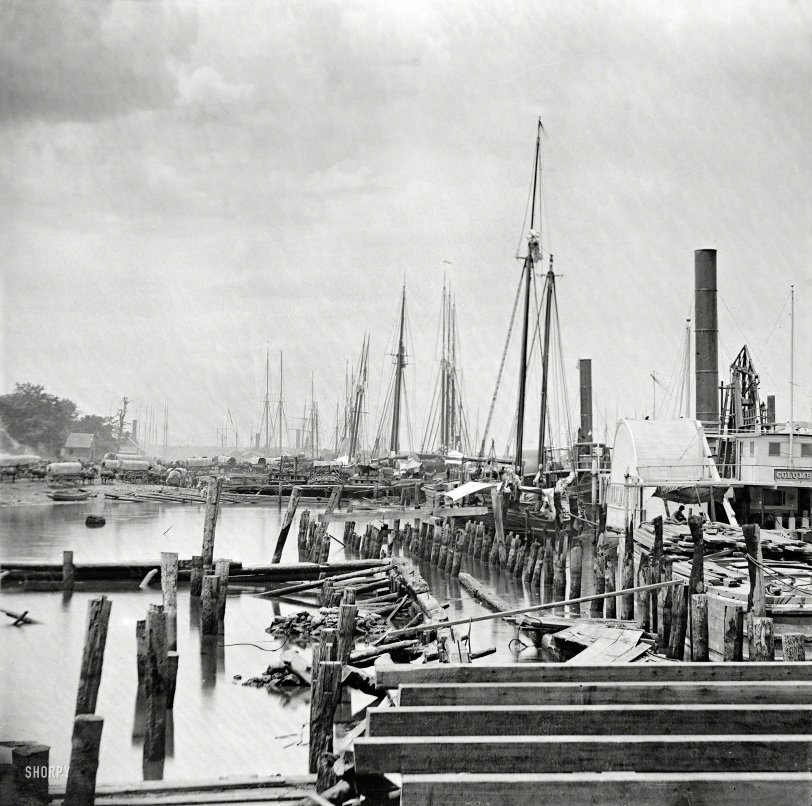


Framed or unframed, desk size to sofa size, printed by us in Arizona and Alabama since 2007. Explore now.
Shorpy is funded by you. Patreon contributors get an ad-free experience.
Learn more.

- Roll your own
- Rugged and real!
- A Charles Purcell - Mama Cass Connection
- Uncle SAAM
- Obfuscation
- One Chocolate Soldier rode away
- Victor Marquis de la Roche
- The Little House Across Way ...
- Vanderbilt Gates
- Vanderbilt Mansion
- You can still see that gate
- Withering heights for me
- So Jim,
- Top Heavy
- Re: Can't Place It.
- Bus ID
- Since you mention it
- The White Pages ?
- Moonlight Tower
- 1907?
- Fire(men) and Water
- Can't Place It
- Can anyone
- Wings
- Where's Claudette and Clark?
- Overbuilt Rolodex
- One song
- Give Me Wings Please!
- PRR
- Pinball Wizards
Printporium
War Effort: 1865

Circa 1865. "City Point, Virginia. Unloading Federal supplies from transports." Civil War glass negative collection, Library of Congress. View full size.
I think the railroad was operating
It can bee seen in the background of this shot https://www.shorpy.com/node/17027
General George Gordon Meade
I apologize if my English is not very good. I'm from Cádiz (Spain), where General George Gordon Meade was born in 1815. I am very concerned for his involvement in the American Civil War (it was a bit controversial) and especially by his father, Richard Worsam Meade, who died in 1828 in Philadelphia. Richard Worsam Meade had a large fleet of boats in Cádiz, but lost everything in the war against Napoleon for his generosity to the Spanish cause. Was imprisoned in the Castle of Santa Catalina in Cadiz due to debts contracted. When he was released back to the United States.
Primitive logistics
In examining this photo, it is useful to remember that the Federal army was operating in enemy territory; that the South's infrastructure had deteriorated; and a line route for the railroad was not available because Richmond had not been taken.
I suspect the size of the shipping was dictated by the James River and the decay of the docks.
I have not seen a good book on the logistics of the Civil War. Perhaps someone could suggest a title?
Walking Beam Engine
Love the walking beam engine on the Columb(ia?). I have always been impressed with how large they were.
Technology Moves Slowly
As in previous views of City Point (now Hopewell, VA, it appears from modern maps), one is struck by how primitive the operation was considering it was the main front in one of the biggest wars in US history. Contrary to the impression from history books, most of the logistsics ships are sail rather than steam (and this is some 50 miles up the James River from its mouth -- much more efficiently handled by a steam ship). On land, it's draft animals pulling wagons, not railroads, although the latter were common in the time period and actually did play a role at City Point.
Another peculiarity is the ramshackle appearance of the infrastructure -- no neatly organized piers with cranes on them, as we would expect in more recent conflicts, but a maze of pilings separating the berths for the ships from the shore, with no obvious way to get the cargoes across the shoals but lighterage, and what might be the decking of a pier being laid in the foreground.
























On Shorpy:
Today’s Top 5